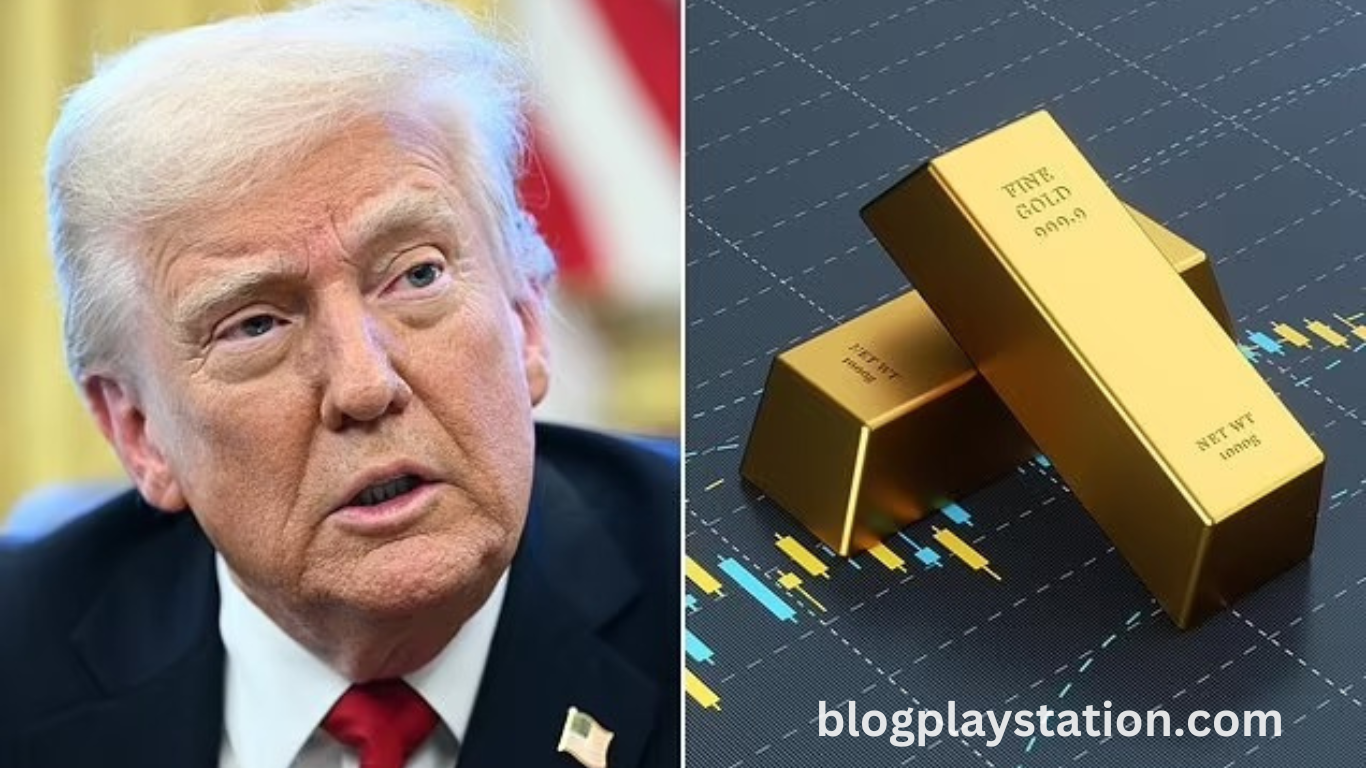The global financial landscape has been dramatically influenced by the policies of former U.S. President Donald Trump, particularly his approach to tariffs. One of the most notable effects has been the surge in investor interest in gold as a safe-haven asset. As trade tensions intensified under Trump’s administration, gold became the go-to commodity for those seeking to protect their wealth. This article explores the relationship between Trump’s tariff policies and the increased demand for gold, shedding light on the economic forces at play.
The Rise of Tariffs Under Trump’s Administration
During his tenure, President Trump adopted an aggressive trade policy, imposing tariffs on a wide range of goods imported from countries like China, the European Union, and others. The aim was to reduce the U.S. trade deficit and bring back manufacturing jobs. However, these tariffs also created volatility in global markets, leading to economic uncertainty and fluctuations in the value of the U.S. dollar.
How Tariffs Impact the Global Economy
The imposition of tariffs raised the cost of imported goods, which, in turn, affected prices for consumers and businesses. As supply chains were disrupted, inflationary pressures mounted, and growth projections became increasingly uncertain. For investors, such unpredictability meant that traditional assets, such as stocks and bonds, could be riskier in times of economic upheaval.
Gold as a Safe Haven Investment
Gold has long been regarded as a safe-haven asset, a commodity that retains its value even in times of financial turmoil. Unlike stocks or bonds, which can fluctuate dramatically due to macroeconomic factors, gold tends to hold its value, or even increase in price, during times of crisis. When Trump’s tariffs caused global market instability, many investors turned to gold to hedge against potential losses from more volatile assets.
A Hedge Against Inflation and Currency Depreciation
In addition to geopolitical and economic uncertainty, tariffs also contributed to concerns about inflation. As import prices rose, many feared that inflation would erode the purchasing power of the U.S. dollar. Gold, however, has a long-standing reputation for protecting wealth against inflation. As the value of the dollar declined due to the ripple effects of Trump’s tariffs, gold became an increasingly attractive investment, offering a stable store of value.
Global Uncertainty Fuels Demand for Gold
The effects of Trump’s tariffs weren’t confined to the U.S. They rippled through the global economy, affecting trade relations, international supply chains, and the financial outlook of countries around the world. Investors, uncertain about how these policies would play out on a global scale, flocked to gold as a hedge against the unpredictable nature of international markets. Gold’s role as a protective asset became even more significant as tensions escalated between the U.S. and its trading partners.
Read More : U.S. Crackdown on ESG Targets Emerging Market Bonds
Trump Tariffs and Gold’s Record Prices
Throughout Trump’s presidency, gold prices saw significant increases. The growing uncertainty around the global economy, compounded by trade wars, led many investors to see gold not just as a safe-haven asset, but as a profitable one. As tariffs led to heightened volatility, gold’s price soared, and it became a focal point for institutional and retail investors alike.
The Trump Effect on Investor Psychology
Trump’s policies also had a unique psychological impact on investors. His unorthodox approach to international relations, along with his penchant for unpredictability, meant that many were unsure of what would happen next. In such an environment, the stability offered by gold proved irresistible. The surge in demand for gold wasn’t just driven by economic factors; it was also a response to investor psychology, where uncertainty often leads to a flight to safety.
Frequently Asked Questions.
What were Trump’s tariffs aimed at?
Trump’s tariffs were aimed at reducing the U.S. trade deficit and bringing manufacturing jobs back to America.
How do tariffs affect the economy?
Tariffs raise the cost of imported goods, creating inflation and disrupting global supply chains, leading to economic volatility.
Why is gold considered a safe-haven investment?
Gold retains its value in times of economic uncertainty, inflation, or currency depreciation, making it a stable investment.
Did Trump’s tariffs cause inflation?
Yes, tariffs raised the cost of goods, contributing to inflationary pressures in the U.S. economy.
How did tariffs impact global markets?
Tariffs caused global market instability, disrupting international trade and creating uncertainty about future economic conditions.
What happened to gold prices during Trump’s presidency?
Gold prices saw significant increases due to growing market instability and investor demand for safer assets during the tariff period.
Why do investors turn to gold during times of crisis?
Investors turn to gold as it provides protection against inflation, currency devaluation, and market volatility, making it a stable asset.
Is gold still a valuable investment after Trump’s policies?
Yes, gold continues to be a valuable investment due to its role as a hedge against financial instability and inflation.
Conclusion
Trump’s tariffs triggered significant market uncertainty, prompting investors to flock to gold as a safe-haven asset. The rise in gold prices during his tenure reflects its enduring appeal in times of economic volatility. While global trade policies have evolved, gold remains a crucial investment for risk-averse investors seeking stability in uncertain financial climates. Its value as a hedge against inflation and market instability is timeless.


